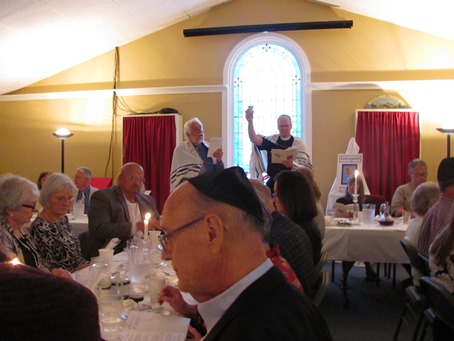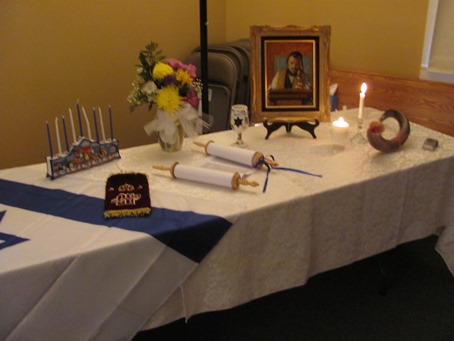The Christian Seder Meal as Sacrament and Precursor to the Fulfillment of Romans 11
 Starting in Romans 10 Paul explained this revelation with a Bible passage to prove that God intended from the beginning to incorporate non-Jews for his Kingdom: “And Isaiah boldly says, ‘I was found by those who did not seek me; I revealed myself to those who did not ask for me’”(Rom 10:20). Paul understood the Jews had mostly rejected Jesus as messiah. However, he revealed that the Jews were not truly rejected by God, but rather were providentially blinded from seeing Jesus as messiah and Lord. This was in order to establish the Gentle Church: “Again I ask: Did they [the Jews] stumble so as to fall beyond recovery? Not at all! Rather, because of their transgression, salvation has come to the Gentiles to make Israel envious.” (Rom 11:11) Yet the Jews continue in some way under God’s providence and continue as part of the foundation of the Church. This is explained in the metaphor of the cultivated and wild olive tree. The Jews are the original olive tree that has been pruned, and then engrafted with new “wild olive” shoots, the Gentile Church (Rom 11).
Starting in Romans 10 Paul explained this revelation with a Bible passage to prove that God intended from the beginning to incorporate non-Jews for his Kingdom: “And Isaiah boldly says, ‘I was found by those who did not seek me; I revealed myself to those who did not ask for me’”(Rom 10:20). Paul understood the Jews had mostly rejected Jesus as messiah. However, he revealed that the Jews were not truly rejected by God, but rather were providentially blinded from seeing Jesus as messiah and Lord. This was in order to establish the Gentle Church: “Again I ask: Did they [the Jews] stumble so as to fall beyond recovery? Not at all! Rather, because of their transgression, salvation has come to the Gentiles to make Israel envious.” (Rom 11:11) Yet the Jews continue in some way under God’s providence and continue as part of the foundation of the Church. This is explained in the metaphor of the cultivated and wild olive tree. The Jews are the original olive tree that has been pruned, and then engrafted with new “wild olive” shoots, the Gentile Church (Rom 11).
But Paul also reveals what he calls a great “mystery,” that the Jews will be re-engrafted. This Church will be the full reconciliation between Jews and Christians
For he [Jesus] himself is our peace, who has made the two one and has destroyed the barrier, the dividing wall of hostility, by abolishing in his flesh the law with its commandments and regulations. His purpose was to create in himself one new man out of the two [Jews and Gentiles], thus making peace, and in this one body to reconcile both of them to God through the cross, by which he put to death their hostility (Eph 2:14-16).
The coming (and presently ongoing) reconciliation will produce a Church that will have more power and glory than either of its antecedent parts: “But if their transgression [rejection of Jesus] means riches for the world, and their loss means riches for the Gentiles [the formation of the Gentile Christian Church], how much greater riches will their fullness bring!” (Rom 11:12). Thus the Gentile Church is only an interim provision, on the way to God’s best for the Body of Christ, a reconciled Jewish and Gentile Church.
 As the Church developed after 4th Century, both, East and West, Christians developed a sense that their churches had reached theological and liturgical perfection and were “all there was.” If they thought about Paul’s revelation in Roman and Ephesians they imagined a Church of the end days that reflected their denominational traditions. Catholics assumed a triumphant Catholic Church and Protestants a triumphant Reformed church, etc. To these bodies would be added many Jewish converts who had become good Catholics, devout Methodists, or nice Presbyterians, etc.
As the Church developed after 4th Century, both, East and West, Christians developed a sense that their churches had reached theological and liturgical perfection and were “all there was.” If they thought about Paul’s revelation in Roman and Ephesians they imagined a Church of the end days that reflected their denominational traditions. Catholics assumed a triumphant Catholic Church and Protestants a triumphant Reformed church, etc. To these bodies would be added many Jewish converts who had become good Catholics, devout Methodists, or nice Presbyterians, etc.
But in the last decades we are getting a glimpse of God’ “mystery” working out that is not meeting these traditional expectations. Most Jews coming into the Kingdom and accepting Jesus as their Messiah are not becoming Catholics, Baptists, or classical Pentecostals, etc. Rather they are forming congregations that keep many of the customs and feasts of the Judaism. [9]
Category: Ministry, Summer 2016


